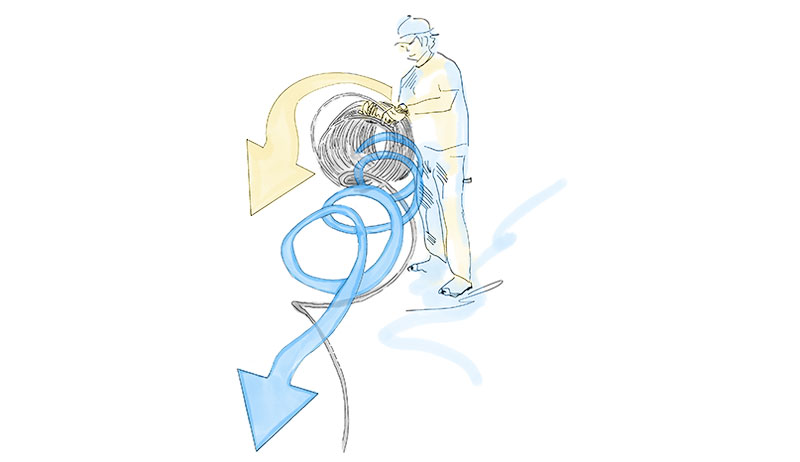
When it comes to being a great grower, there is so much to know. And sometimes we can get caught up in the big stuff, from infrastructure to proper crop rotation.
Yet, it is often the small things that make a real difference. Little techniques and tips, like how to hold a collinear hoe or fix a garden hose, are nuggets of wisdom that, when woven together, make a strong summer of great growing!
These tips on how to unroll pipe—from drip tape to heavy-duty drip line to even large diameter poly transport pipe—will hopefully help you perform one of these little tasks a little easier!
Unwinding Drip Irrigation
One of the most important jobs on a farm is proper irrigation management. But within this domain one has to learn to avoid kinking rolls of drip line when laying it down in a garden bed.
It is a small detail, but often one that can cause much frustration—especially when you are doing it for the first time and the transplants are parched in the field.
There are unwinders you can make and buy to help you. But you can easily do this job by hand. Indeed, it is not very difficult if done right.
Essentially, drip irrigation comes in long rolls wound tightly. This can present a problem when unwinding if it isn’t done right.
You’ll find two major types of drip irrigation:
- lighter duty “drip tape” for vegetables
- heavier-duty line (such as Blueline) for perennials
Read more: Do you have a farm water backup plan?
Lighter Duty
The lighter duty drip irrigation comes on a spool, and you can simply put rebar or pipe through it. One person (wearing gloves) can hold each end of the rebar and the other person can run it down the length of the bed, stopping at the end.
The holder can then cut the piece at the correct length.
You can easily modify this to a one-person job by turning a wheel barrow upside down and setting the spool between the legs as the “holder.”
Read more:With dry farming, you can grow vegetables with almost no irrigation!
Heavier-Duty
The second type of drip line often comes without a spool. It is much thicker poly used for orchards and vineyards and landscaping.
Because this drip irrigation line is so thick, there is much less in a roll and it doesn’t unwind as easily. If you kink it, or even worse kink the line multiple times, you can find yourself in a mess of a job unkinking the line or worse having to cut it and reconnect it with couplers. 
Unwind Right
However, I actually find this type of irrigation line is very easy to unwind by hand with two people performing a few simple steps.
- Person one holds the roll perpendicular to the length of the garden bed. The circle shape should face down the garden beds, so you can actually “look through it and see the length of the garden bed. This may seem counter intuitive, but it is often where growers might make a mistake, lining it up as if it were on a spool.
- Person two—the puller—walks down the length of the garden bed, holding the end of the drip tape.
- Person one keeps their left arm inside the roll to support it. Their right hand helps each successive coil come off the roll as it is pulled.
- Persons one and two mind the magic ingredient: pace. If the puller moves at a constant pace—not necessarily slowly, but at the same pace as the drip irrigation line unravels from the roll—the line will uncoil. Those coils will bounce along the ground like a sideways slinky as they progressively pull out into a straight line. This will prevent the blueline from kinking, so long as the puller doesn’t go too fast.
You can use this same technique for larger rolls of 1-inch poly pipe. Indeed, on one project, we unrolled thousands of feet of 3-inch poly pipe using the same method.
The holder, however, was a tractor’s pallet fork. And the puller was a chain hooked into a drilled hole at the other end. Which reminds me of the beauty that any good idea can be scaled up or down!
Hope this helps lay your irrigation line!
Grow on!
Zach




